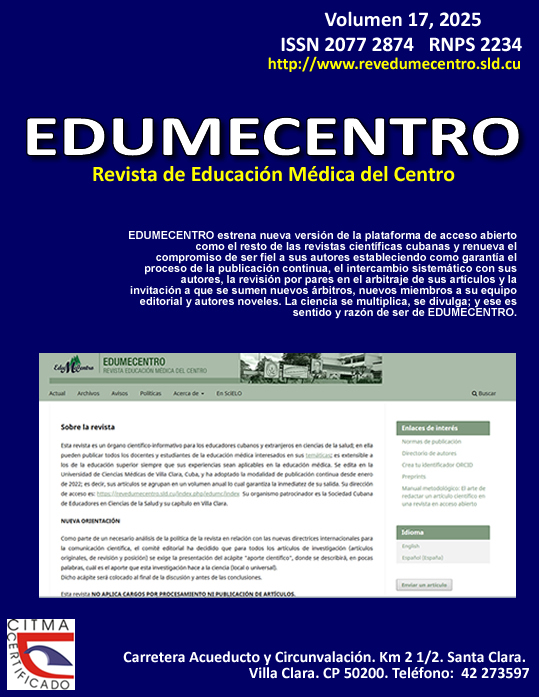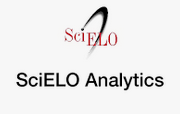Service-learning experiences in Public Health courses in Dentistry
Keywords:
Dentistry, health services, Public Health, learning, studentsAbstract
This research paper reflects on the implementation of the service-learning methodology (A+S) in the Public Health course in the Dentistry program at the University of Antofagasta, Chile. The purpose of the authors is to present the stages of implementation of a service-learning experience using the PARE model (preparation, action, reflection and evaluation) as a frame of reference. This experiential learning strategy reciprocally benefits the students in the achievement of their learning and the community where the service is developed. The authors consider of special importance the instance(s) of reflection where the student analyzes his/her own experience. The implementation of the methodology implies challenges in time management and communication among the participants of the experience: the community, the students and the teachers.
Downloads
References
1. Salam M, Awang Iskandar DN, Ibrahim DHA, Farooq MS. Service learning in higher education: a systematic literature review. Asia Pacific Educ Rev [Internet]. 2019 [citado 04/03/2025];20:[aprox. 22 p.]. Disponible en: https://link.springer.com/article/10.1007/s12564-019-09580-6
2. Yoder KM. A framework for service-learning in dental education. J Dent Educ [Internet]. 2006 [citado 04/03/2025];70(2):[aprox. 9 p.]. Disponible en: https://pubmed.ncbi.nlm.nih.gov/16478925/
3. Playford D, Bailey S, Fisher C, Stasinska A, Marshall L, Gawlinski M, et al. Twelve tips for implementing effective service learning. Med Teach [Internet]. 2019 [citado 04/03/2025];41(1):[aprox. 5 p.]. Disponible en: https://pubmed.ncbi.nlm.nih.gov/29171333/
4. Cohen A, Walker DeVose D, Andrews U. The role of power in the experiences of service-learning community partners. IJRSLCE [Internet]. 2023 [citado 04/03/2025];10(1):[aprox. 19 p.]. Disponible en: https://ijrslce.scholasticahq.com/article/66274-the-role-of-power-in-experiences-of-service-learning-community-partners
5. Lorenzo Moledo MM, Ruíz de Miguel C, Arbués Radigales E, Martínez Usarralde MJ, Buenestado Fernández M, Mella Núñez I. Aprendizaje-servicio en el sistema universitario español. Un estudio enfocado en la evaluación de los proyectos. Aula Abierta [Internet]. 2020 [citado 04/03/2025];49(4):[aprox. 10 p.]. Disponible en: https://reunido.uniovi.es/index.php/AA/article/view/15497/13460
6. Lorenzo Moledo MM, Sáez Gambín D, Ferraces Otero MJ, Varela Portela C. Reflection and quality assessment in service-learning projects. When, with, whom, and why. Front Educ [Internet]. 2020 [citado 04/03/2025];5:[aprox. 14 p.]. Disponible en: https://www.frontiersin.org/journals/education/articles/10.3389/feduc.2020.605099/full
7. Commuter Affairs and Community Service. Faculty handbook for service-learning. [Internet]. 1a ed. Maryland: University of Maryland, College Park, MD; 1999 [citado 04/03/2025]. 83 p. Disponible en: https://digitalcommons.unomaha.edu/cgi/viewcontent.cgi?article=1009&context=slceguides
8. Baumgartner J, Dicarlo C, Casbergue R. Service learning and early childhood education: intersection of developmentally appropriate practice and P.A.R.E. Journal of Early Childhood Teacher Education [Internet]. 2020 [citado 04/03/2025];41(2):[aprox. 18 p.]. Disponible en: https://psycnet.apa.org/record/2020-35777-001
9. Garrido Urrutia C, Raiqueo Vaccaro E. Service learning: Oral health promotion sensory books for a preschool community. J Dent Educ [Internet]. 2024 [citado 04/03/2025];88(3):[aprox. 3 p.]. Disponible en: https://pubmed.ncbi.nlm.nih.gov/38343336/
Published
How to Cite
Issue
Section
License
Los autores que publican en esta revista están de acuerdo con los siguientes términos:- Los autores/as conservarán sus derechos de autor y ceden a la revista el derecho de primera publicación de su obra, el cuál estará simultáneamente sujeto a una Licencia Creative Commons Reconocimiento-NoComercial-CompartirIgual 4.0 Internacional (CC BY-NC-SA 4.0) que permite a terceros compartir la obra siempre que se indique su autor y su primera publicación esta revista.
- Los autores pueden establecer por separado acuerdos adicionales para la distribución no exclusiva de la versión de la obra publicada en la revista (por ejemplo, situarlo en un repositorio institucional o publicarlo en un libro), con un reconocimiento de su publicación inicial en esta revista.
- Se permite y se anima a los autores a difundir sus trabajos electrónicamente (por ejemplo, en repositorios institucionales o en su propio sitio web) antes y durante el proceso de envío, ya que puede dar lugar a intercambios productivos, así como a una citación más temprana y mayor de los trabajos publicados (Véase The Effect of Open Access) (en inglés).










